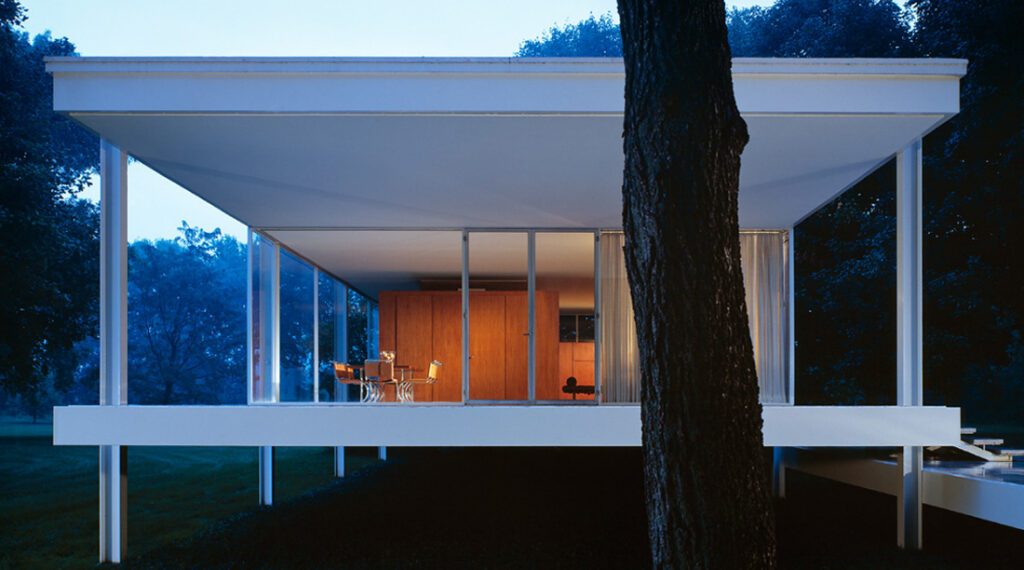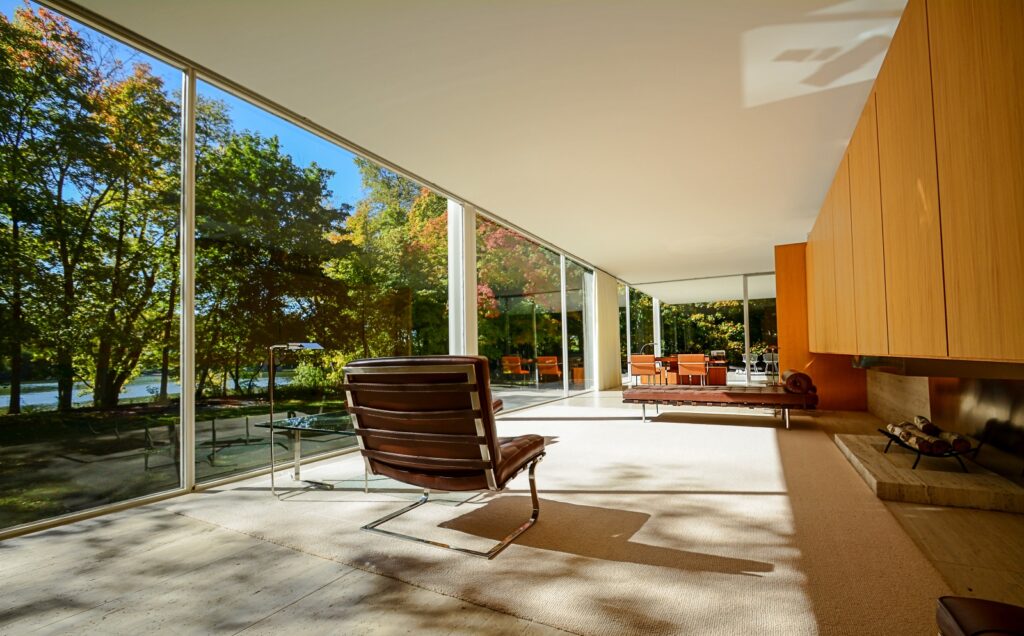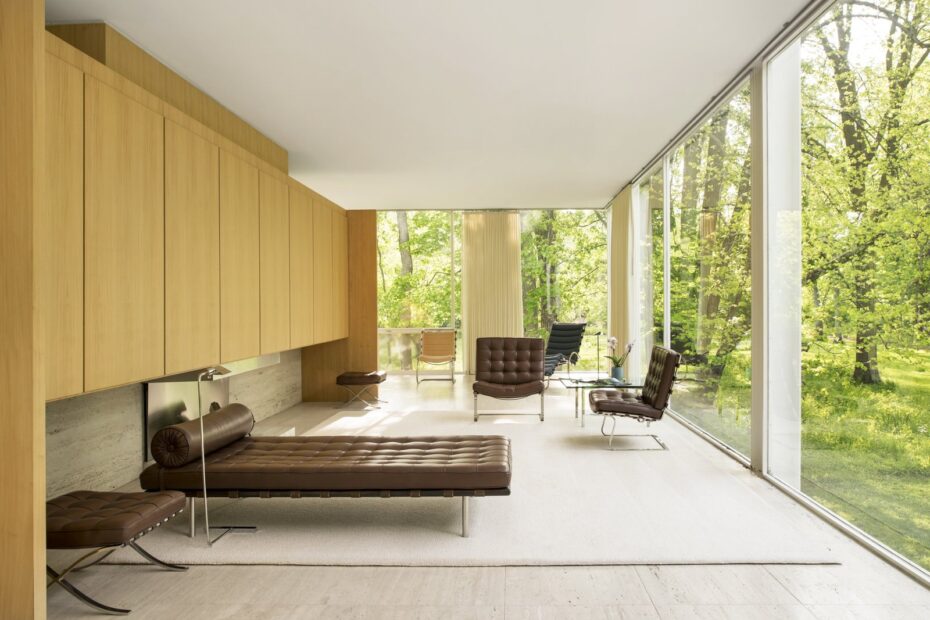Step across the threshold of the Farnsworth House and you immediately enter a realm where minimalism is not just a design choice but a way of experiencing life. Here, every line, surface, and detail is stripped to its essence, inviting occupants into a dialogue with nature that is as quiet as it is profound. In this iconic dwelling, Mies van der Rohe’s vision finds its most intimate expression—a sanctuary where the interior and the outdoors merge into a single, continuous experience.
Inside, the Farnsworth House unfolds as a masterclass in spatial clarity and calm. The open-plan layout defies the conventions of traditional domestic design, eschewing the compartmentalization of rooms in favor of a fluid, unbroken volume. As you wander through the interior, you notice how the spaces seem to breathe; there are no obtrusive partitions, only carefully considered transitions that gently guide you from one area to the next. Each zone is defined not by walls but by subtle shifts in floor levels, changes in lighting, and the strategic placement of built-in furnishings. This deliberate economy of form allows the home to speak in hushed, elegant tones—each space a quiet meditation on simplicity.

Natural light is the unseen architect of the interior atmosphere. The expansive glass walls, which encase the structure, do far more than provide a visual connection to the lush landscape outside; they act as conduits for the shifting patterns of sunlight throughout the day. In the morning, soft beams of light enter the living space like whispers, gradually intensifying as the day unfolds. By afternoon, the interior is awash in a warm glow that accentuates the clean, unadorned surfaces. Shadows play across the floors and walls, lending a dynamic, ever-changing quality to the minimalist decor. In this interplay of light and dark, the Farnsworth House becomes a living canvas where the passage of time is rendered in delicate contrasts.
Every element within the house is a study in purposeful restraint. The furnishings, often integrated into the architecture itself, are simple yet impeccably functional. They are not distractions but extensions of the structure—carefully designed pieces that echo the overarching theme of clarity and order. The built-in seating, for instance, doubles as both storage and a subtle boundary within the vast open space, creating intimate niches without compromising the fluidity of the overall design. There is a profound sense of calm in these unembellished details—a quiet assertion that beauty need not shout to be recognized.

The interior’s material palette is another narrative of understated elegance. Smooth concrete floors, refined steel details, and the soft warmth of natural wood blend harmoniously, creating a tactile dialogue that is both modern and timeless. The textures are deliberately chosen for their ability to evoke sensory responses, from the cool touch of polished stone to the gentle grain of timber. These materials, stripped of excessive ornamentation, allow the inherent beauty of each substance to shine through. They remind us that in the world of minimalism, every material has a story to tell—one that speaks of durability, simplicity, and a refined understanding of nature’s gifts.

Beyond the aesthetics, the Farnsworth House embodies a philosophy of openness and connection. Without the barrier of heavy walls, the residents are constantly reminded of the world beyond—a gentle, persistent invitation to step outside and breathe in the natural splendor that surrounds them. This seamless integration of indoor and outdoor living is not accidental; it is a carefully orchestrated relationship that reflects Mies van der Rohe’s belief that architecture should celebrate the environment rather than dominate it. The panoramic views that greet you from every angle serve as a constant reminder that the home is part of a larger, ever-changing landscape—a place where human habitation and nature coexist in harmonious balance.

In this light, the interior of the Farnsworth House is more than a series of rooms—it is an immersive experience. It challenges our perceptions of what a home can be, encouraging a contemplative lifestyle that values simplicity, clarity, and the beauty of natural order. Every detail, from the precise alignment of columns to the gentle curve of a window sill, is a deliberate act of architectural poetry—a quiet ode to the elegance of minimalism.
Step inside the Farnsworth House, and you embark on a journey where minimalism meets nature—a journey that transforms everyday living into a continuous exploration of space, light, and serene beauty.

